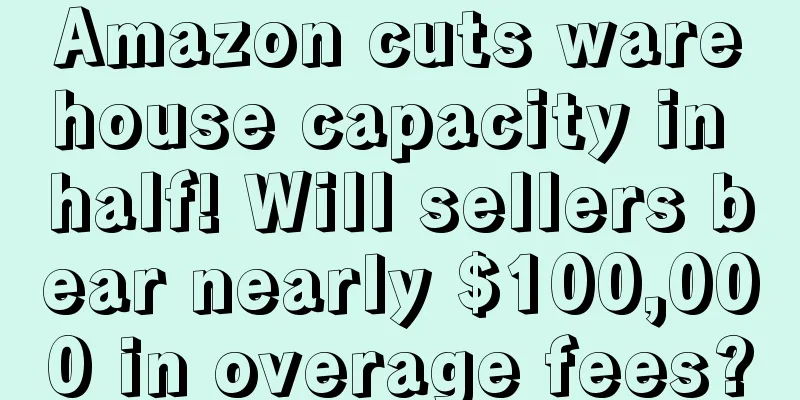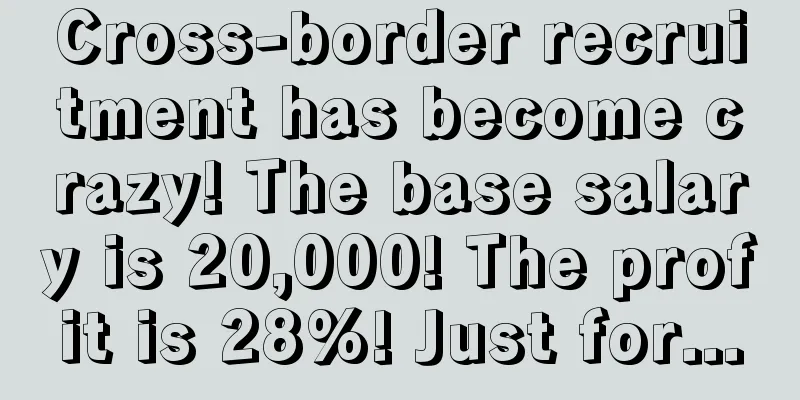|
As Black Friday and Cyber Monday approach, cross-border sellers are at a critical juncture of preparing for the peak season. However, as November approaches, Amazon's sudden reduction in inventory capacity has once again become a stumbling block for sellers to expand their business.
Since Amazon released its warehouse capacity restriction policy in 2021, warehouse capacity reduction and delivery restrictions seem to have become the main theme of most sellers' operations. Especially during holidays, the sudden drop in warehouse capacity often becomes the most discussed topic in the cross-border circle. It is learned that recently many sellers have reported that Amazon's inventory capacity has dropped significantly in November : "I reduced storage capacity by 70% this November." "Same situation, storage capacity dropped by 55%. I don't know what Amazon is doing!" "I also directly cut 50% of the storage capacity. What should I do about the excess fees?" As we all know, Amazon's Black Friday promotion is held in November, so many sellers believe that Amazon should provide more inventory in November. According to sellers' feedback, when checking the backend in early October, Amazon's inventory in November was indeed more than that in October , which made many sellers prepare a lot of goods in order to show their skills in the peak season promotion. But in November, Amazon suddenly reduced its storage capacity, causing many sellers to pay high excess storage fees because their inventory exceeded their storage capacity. A seller recently said that because their storage capacity was reduced by more than half in November, they might have to pay nearly 100,000 in excess storage fees. ▲ The picture comes from Zhiwubuyan Based on this, many sellers speculated that Amazon's reduction in storage capacity was likely to charge more excess storage fees. However, some sellers also mentioned that during the peak season, due to the significant increase in overall shipments, Amazon's appropriate reduction in storage capacity has become a normal sales norm during the peak season. It is worth mentioning that, as early as September this year, Amazon issued a reminder announcement to FBA sellers: Amazon recommends that sellers put Black Friday inventory into storage before October 26, otherwise there may be risk tolerance issues in November. The announcement shows that Amazon's operations center team focuses on the receiving process in September and October, and on processing customer orders in November and December. Most sellers will see higher estimated storage capacity limits in October and lower estimated storage capacity limits in November. ▲ The picture comes from Amazon’s September announcement Key point: Amazon will focus on processing orders rather than receiving products after October 26, so inventory capacity may decrease in November. It can be seen that Amazon did warn sellers about this, but due to the sudden reduction in inventory capacity this month, many sellers were still caught off guard. Here we also remind all sellers to always pay attention to relevant announcements released by Amazon so as to adjust their peak season preparation plans in time to reduce losses. In addition, at this critical juncture of preparation for the peak season, Amazon, which has been making frequent adjustments recently, has once again updated an advertising function.
It is learned that recently, many sellers have discovered that Amazon advertising has a new feature: Sponsored TV (displaying products on TV). According to the official introduction, through Sponsored TV, Amazon sellers can display products to TV viewers and increase brand purchase intention through streaming services such as Freestream. According to the seller, this function is somewhat similar to domestic TV commercials. The TV will play advertisements for the seller's products over and over again, and provide a QR code during the broadcast. Consumers can jump directly to the product link through the QR code. Looking back at the recent period, on the one hand, Black Friday and Cyber Monday brought strong consumer demand, and on the other hand, there were inventory restrictions and fierce traffic competition. At this critical moment when the peak season is approaching, sellers undoubtedly need to break through the traffic bottleneck. This new feature seems to send a good signal to sellers - Amazon is enriching the channels for diversion. However, it is worth noting that according to sellers’ feedback, the minimum daily budget for this feature is $10, charged for 1,000 impressions, and the bid must be less than half of the budget, that is, the minimum daily budget must be set at $20. Amazon’s official daily budget recommendation for this feature is as high as $150 to $250. ▲ The picture comes from Zhiwubuyan In general, due to the high cost of use, most sellers believe that this function is more suitable for large brand sellers who aim to improve brand effectiveness, rather than small and medium-sized sellers who are struggling with traffic conversion: “How many small and medium-sized sellers can tolerate burning advertisements for even just one month without any sales data feedback?” “I feel that this ad has little significance for keyword weight. I personally guess it can mainly increase the brand effect and make customers remember your brand.” "We haven't tested it yet. We probably won't be able to do anything with our products, which have a relatively low average order value." Currently, this function is still in the testing stage and is only open to some sellers. The specific conversion effect is not yet known , and most sellers are still waiting and watching. We will continue to pay attention to it in the future so as to inform sellers in time. If you have any updated news to share, you can also discuss in the comment area~
|










